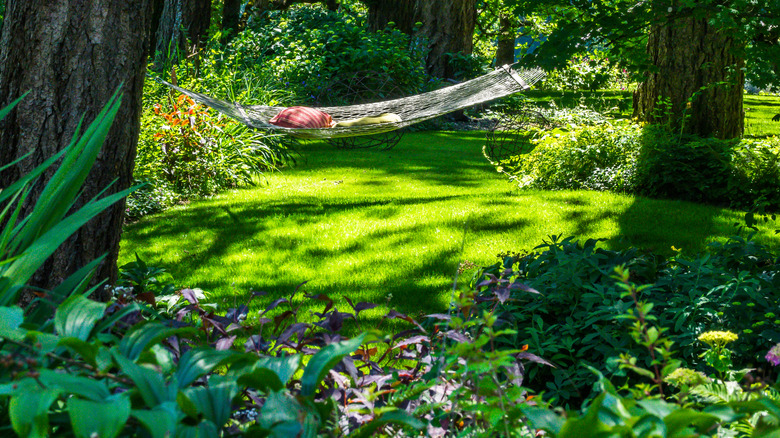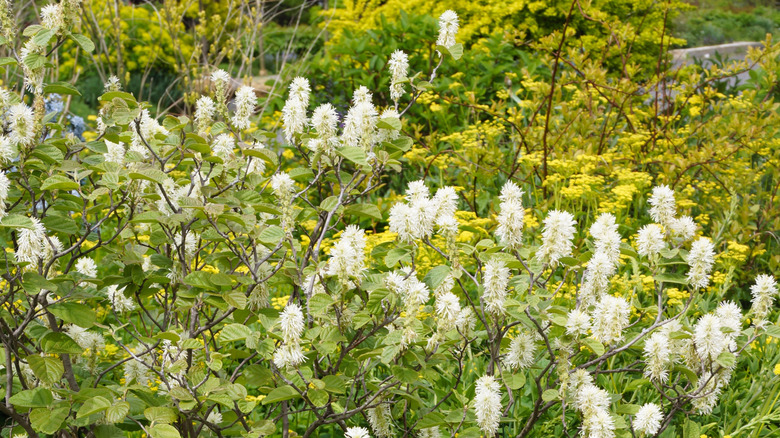The Native Shrub That Loves Shade With Stunning Color In Fall And White Flowers In Spring
Adding native plants can be a complete gamechanger for your garden. Native plants are benefitted by the areas they call home and vice versa. This means that native plants aren't just lower maintenance than non-native options, but that they can also lend a notable helping hand to your local ecosystem, with native plants attracting wildlife like birds and pollinators. With so many benefits, you may be looking for the perfect native options for your yard — and this shade-loving shrub can be a great place to start.
Dwarf fothergilla (Fothergilla gardenii), also known as coastal witch-alder, is native to the southern United States. In its natural habitat, you can find this eye-catching shrub growing in places with ample water and sparse lighting, like wet savannas and bogs. It has unique, fragrant flowers that attract a variety of pollinators while also adding color and depth to your yard. In all, for those starting a biodiverse garden with native plants, dwarf fothergilla offers low-maintenance growth well-suited for the areas of your yard where sun-loving plants can't thrive.
Although dwarf fothergilla is a native plant, it still needs the right care and conditions to thrive. Once you familiarize yourself with the requirements of this show-stopping shrub, you can start the process of growing. One thing to consider before you get started, however, is that starting dwarf fothergilla from seed can be a bit challenging, so you may want to choose to purchase an established plant or propagate one from an existing shrub.
How to grow dwarf fothergilla in your yard
After you've acquired your dwarf fothergilla, the first step is finding the right place to plant it in your yard. Keep in mind that this shrub thrives in USDA Hardiness Zones 5 through 8, giving it a limited range as a perennial. Despite being native to coastal regions and wet areas, dwarf fotherilla does prefer locations with well-draining soil. With that being said, it can tolerate some periods of wet soil or even flooding. When choosing the right location, pay attention to how much sun that area receives in your yard. This plant has flexible sunlight requirements, growing in as low of light as dappled sunlight and partial shade all the way to full sun.
With location out of the way, you may be interested in learning more about caring for dwarf fothergilla once it's established in your yard. Fortunately, this is an easy to grow plant with little need for day-to-day maintenance, which takes some chores off your gardening plate. However, pruning can be an important part of tending to this plant. This is because it produces suckers, which allows for it to readily spread beyond the area you planted it in. Removing suckers as needed can help control spread and keep your dwarf fothergilla confined. If needed, you can also prune this shrub after it produces its showy flowers to keep it looking bushy.

